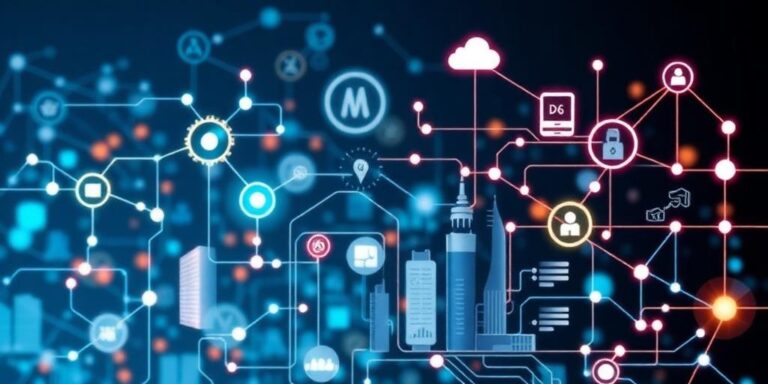Open Source IoT Platforms and Tools: Driving Innovation in 2025
The Internet of Things (IoT) is rapidly transforming industries, connecting devices and generating vast amounts of data. Open source platforms and tools are playing a pivotal role in accelerating IoT innovation, offering flexibility, customization, and community-driven development. This article explores the current landscape of open source IoT, highlighting key platforms, tools, and the impact they are having in 2025.
What is Open Source IoT?
Open source IoT involves utilizing software and hardware where the source code is publicly accessible and can be modified and distributed by anyone. This approach fosters collaboration, accelerates development cycles, and allows for tailored solutions that meet specific needs.
Key Open Source IoT Platforms
Several open source platforms are at the forefront of IoT innovation:
- Eclipse IoT: An open source project providing a comprehensive set of frameworks, tools, and services for building IoT solutions. It supports various protocols and technologies, making it a versatile choice for diverse applications.
- ThingsBoard: An open source IoT platform for data collection, processing, visualization, and device management. It offers scalable architecture and customizable dashboards, ideal for monitoring and controlling IoT devices.
- Node-RED: A visual programming tool that allows developers to create IoT applications by connecting different nodes representing hardware devices, APIs, and services. Its ease of use and extensive library of nodes make it popular among developers.
- OpenHAB: An open source home automation platform that integrates various smart home devices and technologies. It supports a wide range of protocols and allows users to create custom automation rules.
Essential Open Source IoT Tools
In addition to platforms, several open source tools are crucial for IoT development and deployment:
- MQTT (Message Queuing Telemetry Transport): A lightweight messaging protocol designed for IoT devices with limited bandwidth and processing power. It enables efficient communication between devices and servers.
- InfluxDB: An open source time-series database optimized for storing and analyzing IoT sensor data. It provides high performance and scalability, essential for handling large volumes of time-stamped data.
- Grafana: An open source data visualization tool that allows users to create interactive dashboards and monitor IoT metrics. It supports various data sources and offers customizable visualizations.
- Mosquitto: An open source MQTT broker that facilitates communication between IoT devices and applications. It is lightweight, easy to deploy, and supports secure communication.
The Impact of Open Source IoT in 2025
In 2025, open source IoT continues to drive innovation across various sectors:
- Smart Cities: Open source platforms enable cities to collect and analyze data from various sensors, optimizing traffic flow, energy consumption, and waste management.
- Industrial IoT (IIoT): Open source tools facilitate predictive maintenance, process automation, and supply chain optimization in manufacturing and logistics.
- Healthcare: Open source platforms support remote patient monitoring, telehealth services, and data-driven healthcare solutions.
- Agriculture: Open source technologies enable precision farming, crop monitoring, and automated irrigation systems.
Challenges and Considerations
While open source IoT offers numerous benefits, it also presents some challenges:
- Security: Ensuring the security of IoT devices and data is crucial. Open source projects require rigorous security audits and vulnerability management.
- Interoperability: Standardizing protocols and data formats is essential for seamless integration between different devices and platforms.
- Scalability: IoT solutions must be scalable to handle the increasing number of connected devices and the growing volume of data.
- Community Support: Relying on community support can be challenging. Organizations should actively participate in open source communities and contribute to the development of these platforms.
Conclusion
Open source IoT platforms and tools are driving innovation and transforming industries in 2025. By providing flexibility, customization, and community-driven development, they empower organizations to build tailored solutions that meet their specific needs. As the IoT landscape continues to evolve, open source technologies will play an increasingly important role in shaping the future of connected devices and data-driven insights.




